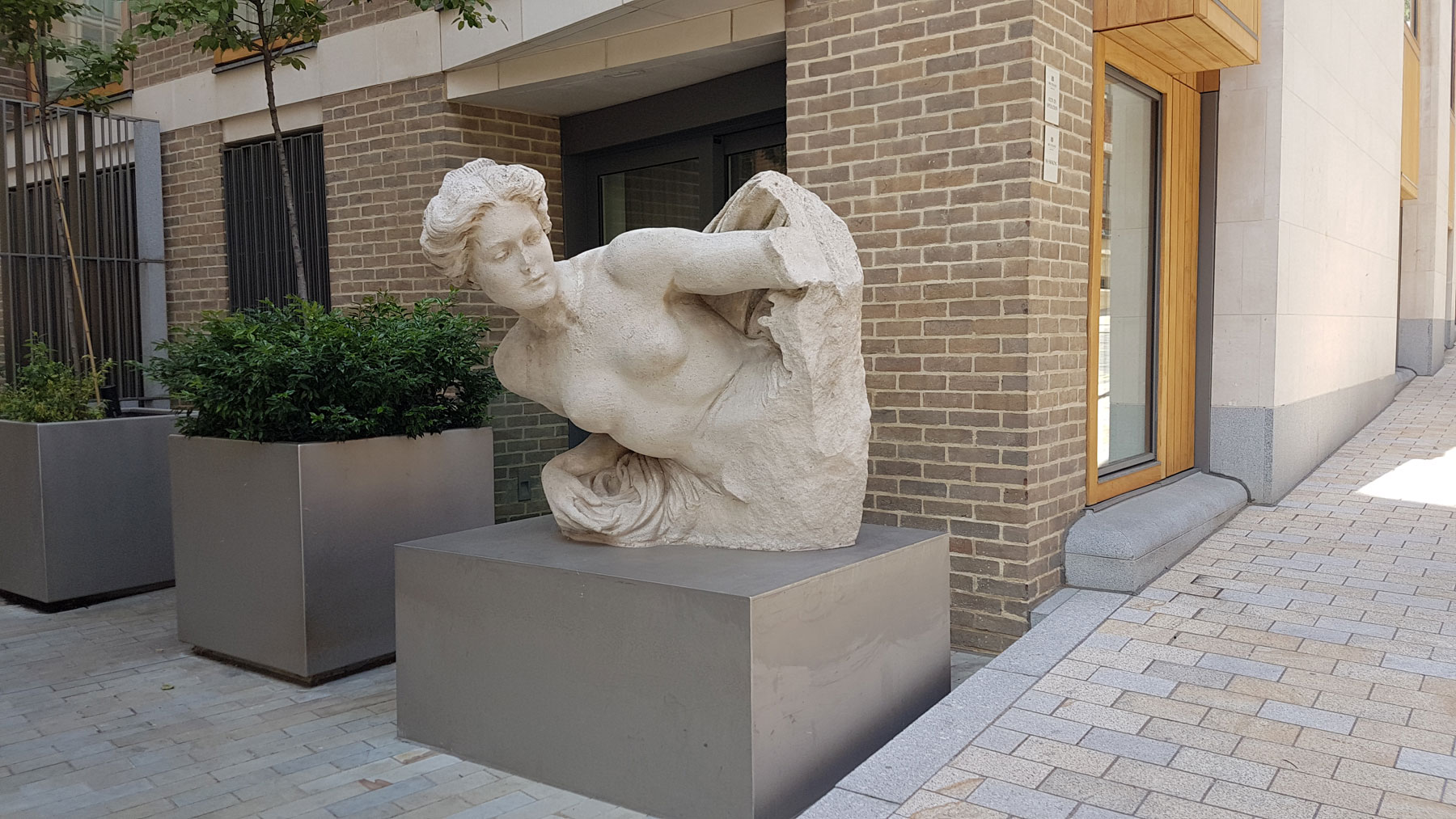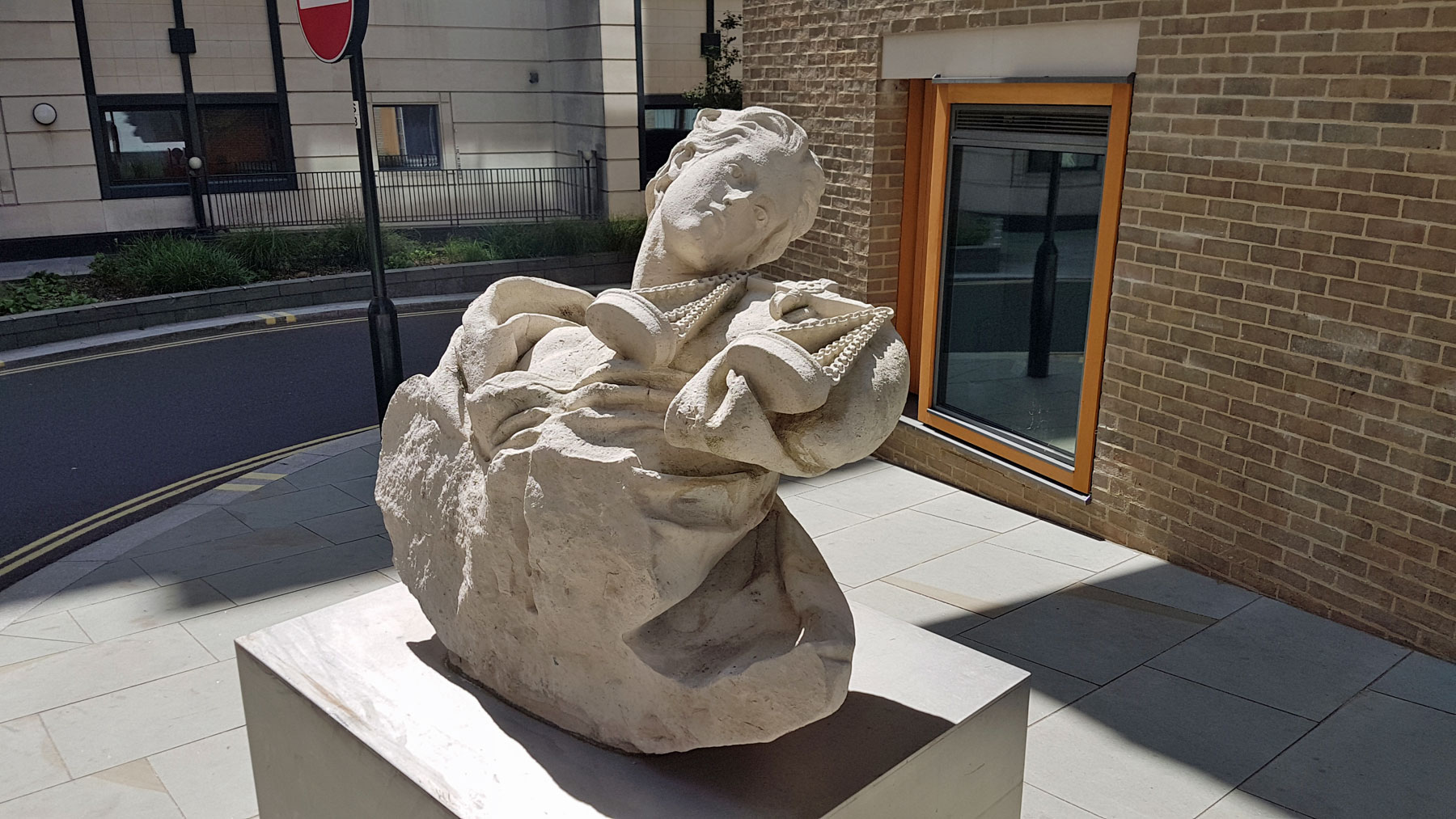Three large stone heads can be found looking around corners of a new housing development by Aldwych.
They’re not new though, but thee sculptures by Henry Pool that used to adorn a grand Edwardian office building, and ended their days sitting in a cluster on a rather shabby courtyard in the former office block that’s now residential flats.
Henry Poole RA (1873-1928) was a British architectural sculptor, who while prolific saw most of his work destroyed when older buildings were redeveloped. That makes these three stone heads a rare survivor of his work.
He also created an icon that is not often attributed to him – a pair of lion sculptures. If you go past major HSBC bank buildings, such as the one in Canary Wharf, there will be two large lions outside. The originals were commissioned by HSBC for their Hong Kong office in 1923 and were designed by Henry Poole. Although the originals are in a museum, HSBC still uses a similar design, by a later sculptor, WW Wagstaff to this day.
Back to Aldwych, three stone heads survive from a larger collection that were commissioned for the offices of the United Kingdom Provident Institution. The United Kingdom Provident Institution moved out of the site in 1975, and later merged with Friends’ Provident in 1986.
That very grand building was replaced with a huge and very ugly 1970s office block and it seems that three of the stone heads from the decorative sculptures were saved to decorate a roof terrace. And there they stayed unremarked until the site was cleared once more, for housing.
The 1970s concrete plinths that supported the heads were removed as they were very much more suitable for the old courtyard. The developer argued that stone plinths would fit better with the cladding on the building – but later decided to clad the plinths in steel.
The three heads have now been positioned along Milford Lane, one near the junction of the Strand, the second in the entrance to the private courtyard, and the third near the junction of Tweezers Alley.
They look a little lost in the street, and might have been better if placed closer together, but that aside, I doubt many people walking past will realise they are over a century old and remnants from an old Edwardian office building.










Thank you for shedding light on these. I stumble across them in 2019, but couldn’t find anything about them, or, as it turned out their fascinating history. So many of these intricate carvings are located high up on buildings that you never get the chance to properly appreciate them.
I remember those lions outside the HSBC head offices in Hong Kong. Used to walk past them, then catch the escalator up through the glass floor of the building to the banking hall above. This was in 1987, before HSBC bought the Midland Bank or had more than a token presence in the UK, so I guess the ones outside offices in the UK are more recent copies.
How interesting; the flats are marketed as 190 Strand, and I used to work in one of the buildings they replaced. Its dates were actually 1963-56 and it was called Abbey Life House. It had various pieces of artwork in it, including a rather good ship mural and some very Sixties abstract art, but I don’t recall seeing these. Very poorly displayed now, though, the poor ladies look contorted for no reason…
Grr 1963-65 of course. Still visible if you use the 2008 Google Steet View; the moural was at the top of Arundel St (the whole area being named after various Dukes’ mansions form the 1600s)
Wow, I remember walking pas that old office block a few times in the early 2000s.
I am always so grateful for street view. What a lot of change in the town between 2008 and now.